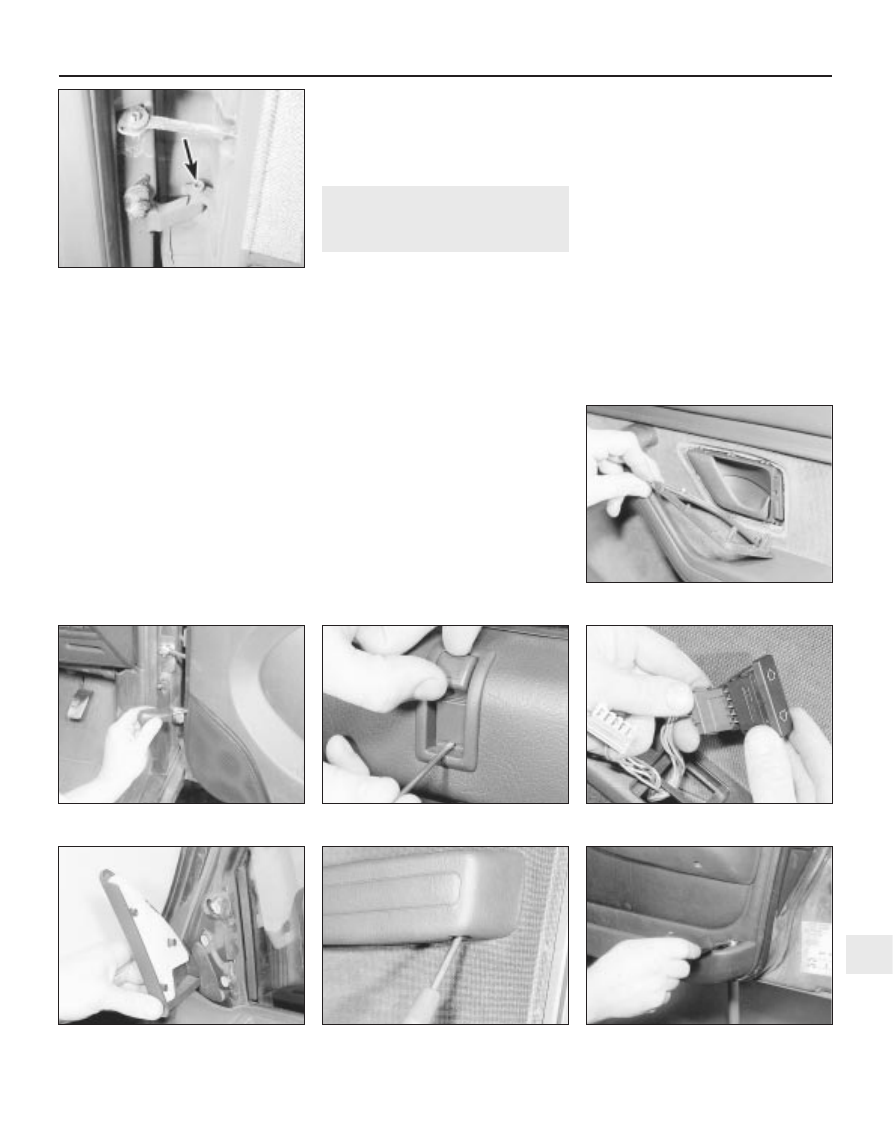Peugeot 405 Haynes (petrol). Manual - part 26

6 Ensure that the door is adequately
supported, then unscrew the pivot pins from
the hinges (see illustration).
7 Lift the door from the vehicle.
Refitting
8 Refitting is a reversal of removal, noting that
the hinge pins fit with their heads towards
each other, ie, the upper pin fits from below
the hinge, and the lower pin fits from above
the hinge.
9 On completion, check the fit of the door
with the surrounding body panels. On early
models, the fit of the doors can be adjusted as
described in paragraph 11.
10 If adjustment of the door lock is required,
this can be achieved by altering the position
of the lock striker within the elongated bolt
holes in the body pillar.
Adjustment - early models only
11 The fit of the door can be adjusted using
shims fitted between the hinge and the door.
To add or remove shims, loosen the bolts
securing the hinge to the door (the door inner
trim panel must be removed for access to the
bolts - see Section 13), then fit or remove
shims as necessary.
13 Door inner trim panel -
removal and refitting
3
Removal
1 If the trim is being in removed in order to
remove the window glass, lower the window
to approximately the two-thirds open position.
2 Carefully prise the surround from the door
interior handle (see illustration).
3 Remove the loudspeaker cover panel,
either by depressing the securing clip at the
lower edge of the panel, or by removing the
three securing screws from the edge of the
panel, as applicable (see illustration).
4 Unscrew the securing screws, withdraw the
loudspeaker, and disconnect the wiring.
5 Lift up the inner door lock operating button
then, using a small screwdriver, depress the
retaining tab, and slide off the button (see
illustration).
6 On models with manually-operated
windows, carefully pull the window regulator
handle from the door.
7 On models with electric windows,
disconnect the battery negative lead, then
prise the switches from the door, and
disconnect the wiring plugs (see illustration).
8 Prise the mirror trim plate from the front
corner of the door (see illustration). Where
applicable, loosen the clamp screw, and
release the mirror adjuster knob from the trim
plate.
9 Remove the securing screws and withdraw
the armrest (where applicable, prise the trim
plate from the armrest to expose the screws)
(see illustration).
10 On later models, prise the trim plate from
the rear of the door pocket, and unscrew the
rear trim panel securing screw (see illustration).
11 Where applicable, using a screwdriver,
release the trim panel securing clip located in
the loudspeaker aperture.
12 Working around the edge of the door,
release the remaining securing clips around
the edge of the trim panel, ideally using a
forked tool to avoid breaking the clips.
13 Lift the panel to release it from the top of
the door, then withdraw the panel. Where
applicable, disconnect the wiring plug from
Bodywork and fittings 11•7
13.3 Removing a loudspeaker cover panel
securing screw
13.8 Prise off the mirror trim plate
13.7 Removing an electric window switch
from the door
13.5 Depress the retaining tab and slide
off the lock operating button
13.2 Removing the door interior handle
surround
12.6 Door pivot pin (arrowed)
11
13.9 Remove the securing screws and
withdraw the armrest
13.10 Removing the rear door trim panel
securing screw - later model